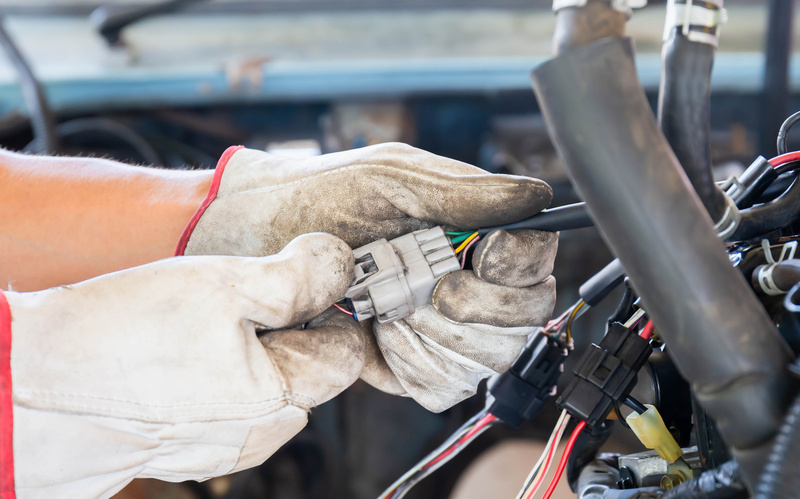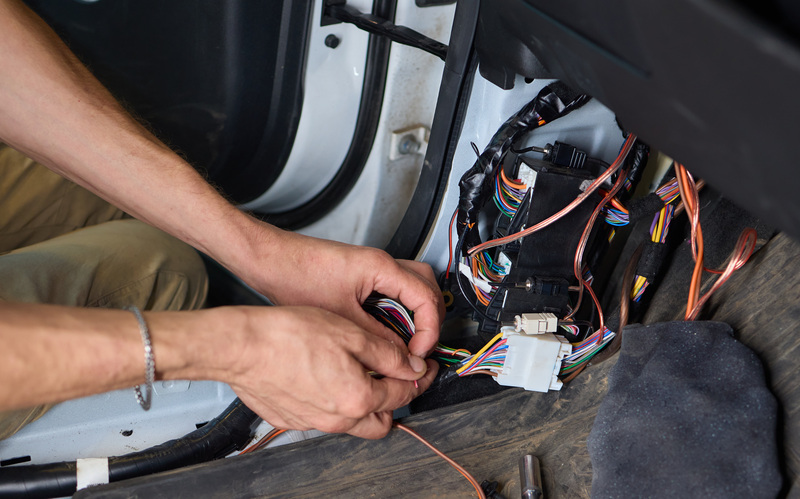Customizing Automotive Connectors for Specific Applications
Customizing Automotive Connectors for Specific Applications

Automotive connectors are critical components in modern vehicles, creating seamless communication and power transmission between a vehicle’s electrical components. Yet, standard connectors fall short when manufacturers face unique design requirements, environmental challenges, or performance demands. That’s where customizing automotive connectors for specific applications comes into play.
We’ll examine the importance of customizing connectors, explore design and material considerations, and break down the value of testing. With these insights, you’ll understand how tailored solutions can enhance the reliability and efficiency of automotive systems.
The Importance of Application-Specific Automotive Connectors
Off-the-shelf automotive connectors may meet general standards, but they could fail to match the specialized requirements of your applications. For example, extreme environments—high-vibration areas in off-road vehicles or intense heat zones near engine compartments—demand durable connectors. Using standard connectors in such scenarios can lead to failures, increased maintenance costs, or reduced system performance.
Customization addresses these issues head-on. It enables manufacturers to optimize connection systems for different demands so that vehicles perform reliably, even under the toughest conditions. Custom connectors improve the performance and efficiency of electrical systems within vehicles. This is particularly relevant for electric vehicles (EVs), autonomous vehicles, and advanced driver-assistance systems (ADAS), where innovation relies on specialized electrical connectivity.
Design Considerations When Customizing Connectors
The design of a custom automotive connector helps it fulfill its intended function. Every design decision—from the connector’s physical shape to the arrangement of its pins—affects its compatibility, durability, and efficiency.
The operating environment dictates a connector’s design. For instance, automotive connectors that will function in water-prone areas must have enhanced sealing mechanisms to meet IP67 or higher protection standards. Similarly, connectors near suspension systems should have strong locking mechanisms to prevent dislodgement.
Next, space constraints within vehicles necessitate compact connectors that won’t overlap or interfere with other components. Due to their densely packed electrical systems, miniaturized designs are necessary, particularly in EVs. Designers must also account for temperature variations and thermal expansion by incorporating materials and insulation that meet such challenges head-on.
Finally, pin layout and signal integrity affect connector design. Engineers need to minimize resistance and interference for connectors in high-speed communication systems, such as ADAS components or vehicle-to-everything (V2X) networks. This creates clear, precise signals that contribute to system accuracy and dependability.
Material Selection for Enhanced Performance
Selecting suitable materials is necessary when customizing connectors because they influence durability, conductivity, sealing properties, and resistance to environmental challenges.
Copper alloy is ideal for metal components, such as pins or contacts, due to its excellent conductivity and corrosion resistance. Gold or silver plating enhances performance by reducing electrical resistance and wear from contact. Manufacturers may balance the performance benefits of plating with cost considerations by using selective plating where appropriate.
Housing and insulation materials also contribute to connector performance. Thermoplastic polymers, such as PBT (polybutylene terephthalate), are valuable for their ability to resist heat, chemicals, and mechanical stress. PEEK (polyether ether ketone) may be useful for the sake of high thermal or chemical resistance.
Sealing materials, such as silicone or EPDM (ethylene propylene diene monomer) rubber, protect connectors from external contaminants, including dust or water. Additionally, flame-retardant materials support safety, particularly for EVs. Stringent fire safety regulations control the manufacture of lithium-ion batteries, and connector manufacturers must adhere to UL 94 flame-resistance standards.

Testing and Validation of Custom Connectors
Testing ensures that custom connectors meet performance requirements. Each application has different demands, which is why a comprehensive validation process is necessary for maintaining the quality and reliability of a custom connector.
Vibration testing determines whether a connector can withstand prolonged mechanical stress without losing stability or electrical contact. Instances of failure during testing lead to design adjustments, such as reinforcing latches, adding secondary locking mechanisms, or modifying materials to minimize micro-movements.
Temperature testing simulates extreme conditions and rapid fluctuations, helping manufacturers choose materials and structures that will remain stable in hot or freezing environments. Temperature testing is particularly important for connectors in hot spots, such as combustion engine bays or in EV battery systems.
Ingress protection (IP) testing evaluates resistance to water, dust, and other particulate matter. Achieving high IP ratings—IP67 or IP69K—may be necessary for automotive connectors in environments exposed to the elements, such as undercarriages or roof-mounted sensors. Testing also detects leaks and confirms the effectiveness of seals before mass production.
Electrical performance testing, which measures voltage drop, current-carrying capacity, and insulation resistance, determines efficient energy transmission. Additional electromagnetic interference (EMI) testing confirms that signals remain unaffected for communication-based connectors, even in electronic environments with a lot of “noise,” or activity.
Examples of Application-Specific Solutions
Real-world examples demonstrate the value of customizing automotive connectors for various applications. Custom connectors in electric vehicles can handle high-voltage direct current safely and efficiently. These connectors feature enhanced insulation materials and locking mechanisms to ensure operational safety during use and ease of maintenance.
Autonomous vehicles rely on many sensors and cameras, so they need specialized connectors that offer high data transfer rates and protection against environmental interference. Manufacturers have introduced innovative solutions, such as shielded connectors, to prevent signal disruptions.
Agricultural and construction vehicles benefit from rugged connectors that withstand constant exposure to dirt, moisture, and vibrations. One notable advancement is the addition of internal pressure equalization systems, which prevent moisture buildup inside sealed connectors.

Partnering With Experts for Custom Solutions
Developing custom connectors requires close collaboration between manufacturers and connector suppliers. Experienced suppliers bring technical expertise, specialized facilities, and insights into emerging trends within the industry. Partnering with such experts allows businesses to accelerate development cycles, comply with industry standards, and allocate internal resources where necessary.
By leveraging expertise from experienced connector providers, organizations benefit from faster prototyping, access to advanced materials, and advice that aligns with best practices.
Concluding Thoughts
Custom automotive connectors are essential as vehicles grow more technologically advanced. From intelligent ADAS systems to the expanding EV market, manufacturers can no longer rely on standard solutions to meet performance demands.
Engineers who customize automotive connectors for specific applications can deliver reliable, high-performing products that adapt to rapidly evolving automotive standards.

You must login to post comments.